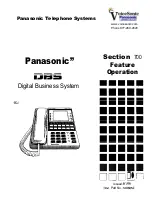
Bellcall Digital Door Entry System
PD-083 Issue 3A
Installation and Operating Manual
Page 13 of 46
Wiring
Refer to Diagrams A through E as appropriate for the equipment you have.
All wiring is carried out using a mixture of Cat5 or telephone cable for the signal wiring and
1mm² (or greater) cores for the power wiring; refer to Page 11 for further details. It is
strongly recommended that a consistent colour code be used throughout such as that
indicated on the connection diagram.
Certain signals must be interconnected using a
twisted pair from the Cat5 cable. These are clearly marked on the connection diagram
and should be strictly observed.
Entrance Panel
The panel should be mounted at an optimum height of 1.6 m, measured between the
ground and top of panel. With flush mounting panels it is advisable to apply mastic to the
top and side edges of the panel to prevent water ingress behind the panel, but not the
bottom edge.
On construction sites the panel must be protected from corrosive
substances such as ‘brick acid’. The panel should be cleaned only with a damp cloth
containing dilute detergent.
Phone
The phone is designed to be wall mounted onto plasterboard or other masonry, DDA
considerations may dictate a lower height.
It should be fixed with No 6 screws (not
supplied). If the cable is to be feed from the wall cavity then make a hole for this at the
same time. The top cover of the BS-A phone is secured by clips at both sides. Before
replacing the Front Cover check that the DipSwitch settings are correct or change as
necessary (see Page 18).
Electric Door Release
Both fail-secure and fail-safe lock releases (including magnetic locks) use the same
terminals. To set the lock type, refer to the ‘Door Controller Settings’. When installing lock
releases please allow a little movement on the door, as operation will be impaired if fitted
too tight.
NB. Magnetic locks (maglocks) must be fitted with a suppressor at the lock terminals.
Some manufacturers fit an acceptable internal suppressor.
Fail Safe Exit Notes
Fail safe exits require an exit button and this should be normally open so that the controller
can be used to give a timed exit. If the exit button has both normally open and normally
closed contacts, then the normally closed contact can be wired in series with the release /
maglock along with the break glass in case of equipment failure.
A not uncommon problem with maglocks is being locked out of the building due to
equipment failure, lost codes or fobs. So consider an alternate building entrance, or an
externally accessible secure keyswitch, or a reliable method of disabling the system during
overnight secure lockup.
Fail Secure Exit Notes
Commonly fail secure exit doors incorporate a thumb-turn, door handle or mini push bar
rather than use of an exit button. Fire officers usually require a minimum of door handle or
push bar to open a door on a fire exit route – not thumb-turn.
Most fail safe locks are not continuously rated and if an electrical hold open system is used
for say busy times, then a continuously rated release must be used.














































